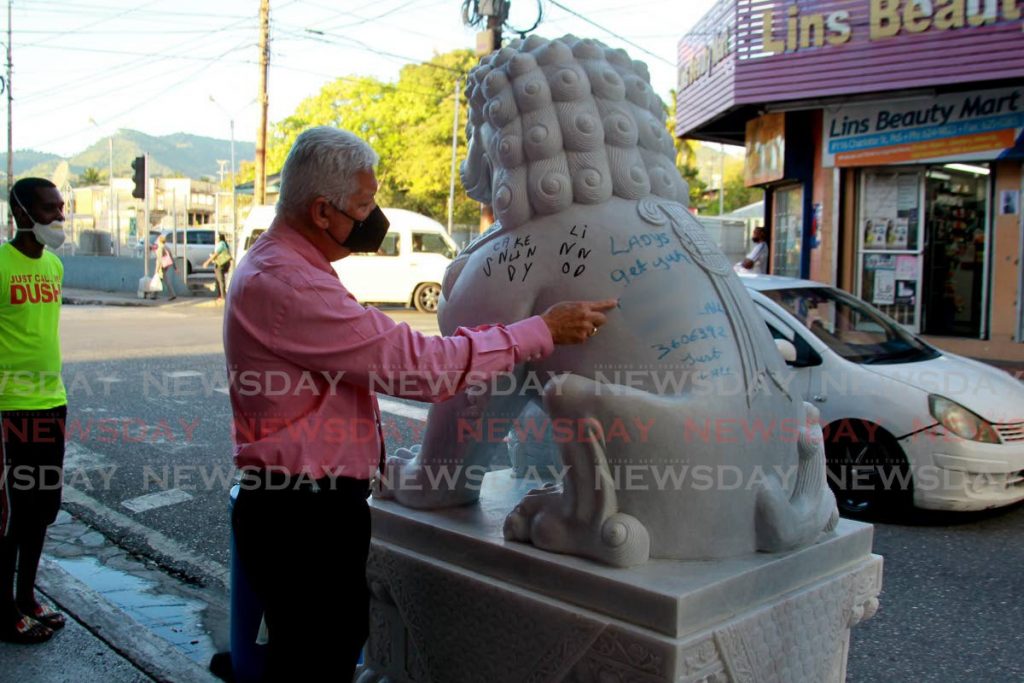Respecting the China in town

Last week, the Chinese lion statues put up on Charlotte Street a month ago were defaced with graffiti.
There has been official embarrassment at seeing the sculptures covered with scrawled writing, some obscene.
Newsday called a number written on the statue and discovered that someone had paid to put it there as advertising. That kind of insensitivity can only be the result of unawareness of the insult it implies.
But the sketchy consultation that preceded the summary designation of part of Charlotte Street as Chinatown is partly to blame.
When the arches along the street, built by the Shanghai Construction Group, were installed in October 2019, they fulfilled a promise made by Port of Spain mayor Joel Martinez.
The presence of the arches might have been the result of a discussion between politicians, but it was a surprise to the regular patrons on the street, the rest of the population, and even to some businesses operating there.
Defacing monuments has long been a way for the public to express its displeasure at the ideas enshrined by such artifacts, as demonstrated in the recent treatment of the statue of Christopher Columbus on Independence Square.
The relationship between TT and China is very different, however. It began in 1806, with the arrival of the first Chinese immigrants to this country, and hence significantly predates the more recent ramping-up of business relations between the two countries.
The 1911 Chinese revolution led to a fresh influx of immigrants, and the evolution of their presence in TT continued. In October 2020, the TT Chinese Association celebrated its 75th anniversary, marking a period of cultural, social and economic consolidation of the presence of the community in this country.
The two centuries of Chinese migration have managed to mix preservation and respect for the community’s own ancestral cultural values with an outsized footprint in every sphere of this country's cultural and social growth.
TT has embraced a range of these cultural values and norms seeded through Chinese influence. From an appreciation of treats and cuisine from China's mainland to more recent athletic pursuits like dragon-boat racing, the Chinese presence in TT has been good for this nation.
That long history should not have been taken for granted by simply dropping arches and then lion statues on Charlotte Street without making any effort to provide some context. Monuments are respected in direct proportion to the general understanding of the reason for their presence.
The “why” of the Charlotte Street monuments should be more comprehensively addressed by city managers and the government as a whole. This incident demonstrates the need for more of the population to be made aware of our history, joint and several, as we move into a shared future. Mere symbolism is not enough.


Comments
"Respecting the China in town"